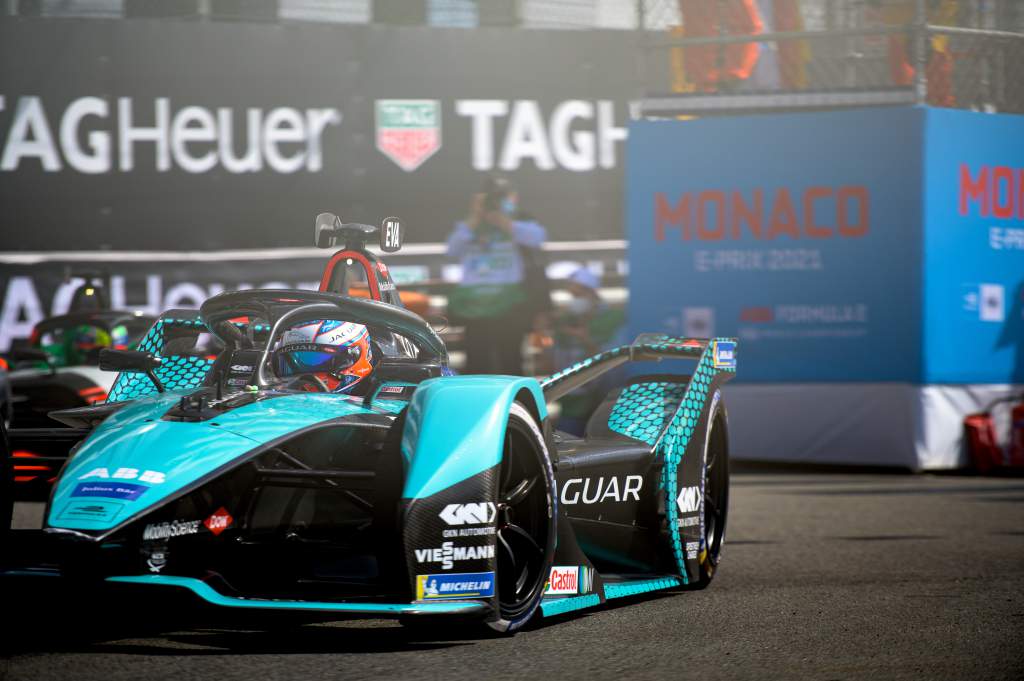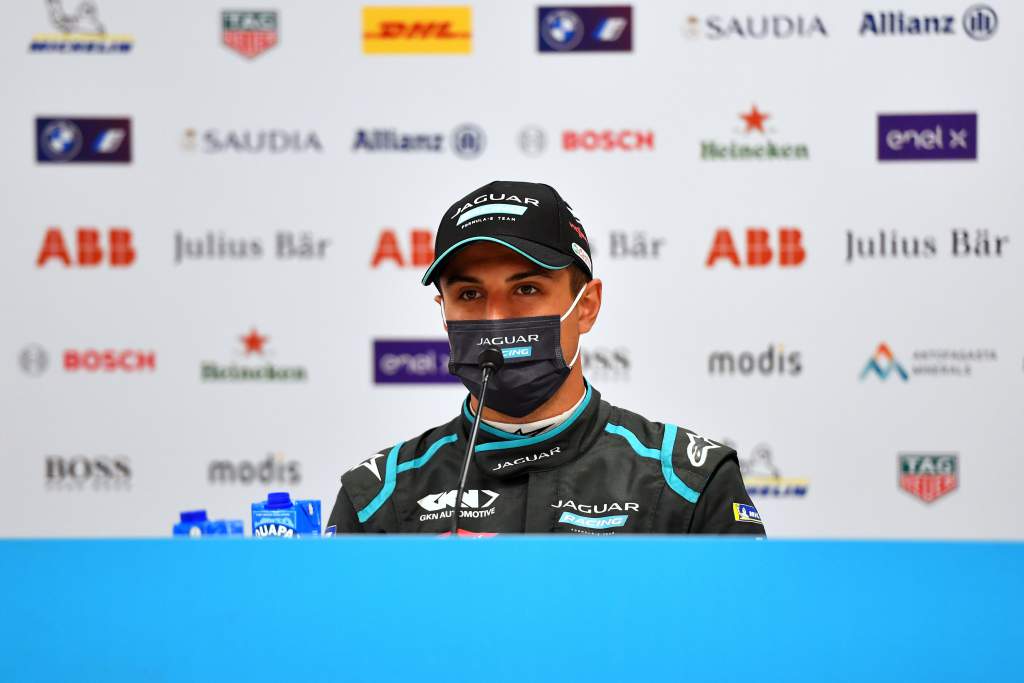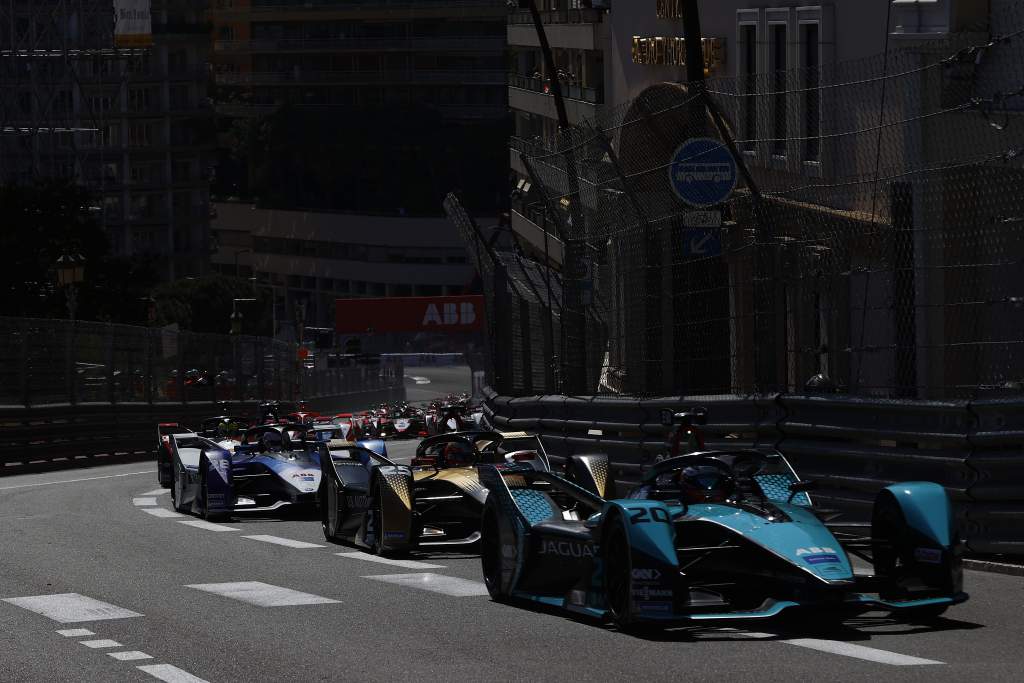Mitch Evans was reasonably philosophical after the Monaco E-Prix last Saturday but something deep within him was hurting.
The Jaguar driver had been leading Formula E’s first race on the full Monaco Grand Prix Formula 1 layout going onto the final lap, but ended up third behind Antonio Felix da Costa and Robin Frijns.
But it was the sting of Jean-Eric Vergne’s early chicane lunge that had triggered a rash of conflicting emotions.
Initially these were the usual racing ‘ifs’, ‘buts’ and ‘maybes’. They were emotions and feelings that Evans knew about at Monaco after coming close to winning before in GP2.
At his ‘home’ race he was almost forced to quickly adopt a philosophical state because he knew that until an ambitious black-and-gold flash appeared beside him at the chicane he was building a probable race-winning drive.
To paraphrase The Stranglers’ tongue-in-cheek 1977 punk rock staple Peaches, which somehow seems ubiquitous on the sun-drenched terraces of the Cote d’Azure, Evans was essentially “strolling along minding his own business” when Vergne allowed temptation to succeed at the harbourfront chicane just before the 15-minute mark.
Jaguar’s technical leader Phil Charles has no doubts that the lunge and what it then triggered was “completely pivotal for our race at that moment”.
“Mitch was being quite intelligent actually, he was sat happily behind da Costa and Frijns, just watching what they were doing, trying to pick up a bit of energy and just planning for the race.”
But when Vergne made his move Evans was forced to cut the chicane and then there followed an informal approach from DS Techeetah to enquire with race control whether Evans could give back the position.
Initially it looked like that wouldn’t happen but after five laps it was communicated that he should. Evans gave a sardonic “thanks Scot for leaving it so late”, in reference to race director Scot Elkins and what seemed to be a slightly protracted decision.
The details of how that affair shaped the race and probably asked another question of the sporting regulations were detailed elsewhere, but in reality the crux of the matter was that Evans’s race started to get ever so slightly out of control from an energy management point of view from then.

“We had to use energy to get ourselves back into position,” says Charles. “He did really well. Absolutely fantastic recovery from that point, but unfortunately, on that particular scenario, as it unfolded, we had to use energy and rear tyre.
“The last attack [mode] was a really strong part of the race for us, which is fantastic.
“The overtaking, Turn 3-4 [Beau Rivage/Massenet], to get back into it was brilliant, but we knew at that point that we were a little bit against it because we used that energy to get back.
"ABSOLUTELY OUTRAGEOUS"
You're not supposed to be able to overtake like that at Monaco for the lead, @mitchevans_ !#MonacoEPrix 👉 https://t.co/3hxrnMERTJ @JaguarRacing pic.twitter.com/msBDIVlUaX
— ABB FIA Formula E World Championship (@FIAFormulaE) May 8, 2021
“Obviously if we hadn’t had that little tussle with JEV, you’ve not had to do that work and you’d be in a slightly better position.”
Things were compounded when energy was deducted as the safety car was deployed to retrieve Rene Rast’s crocked Audi at Beau Rivage.
Yet had it come a few minutes later then the new 40-minute-mark energy deduction rules tweak would, according to Charles, have left Jaguar “laughing our socks off, because we’d have been in decent shape [on energy]”.
But the reality was that in the grand scheme of things it made it all the more difficult for Jaguar because it took the energy offset, and with less time to recover to get back to a decent last-lap energy target, Evans ended up starting that final lap with an almost impossible energy mission.
While the energy was one issue, managing the rear tyres was another that everyone had to juggle on Saturday.
The all-weather Michelins were difficult to protect in Monaco because, according to Charles “when you’re trying to race the others, the really the best place to do it [protect the tyres] is the last corner [Anthony Nogues], Turn 1 [Sainte Devote], Turn 6 [hairpin]”.
The problem with these areas is that they are all followed by potential overtaking places for Formula E cars which – and let’s have some fun here – made Formula 1 cars look like blockading trucks around the sinuous Monegasque streets when it came to passing.
So Evans was “trying to do his best and just be really gentle, gentle on the tyres, but every time you race [other cars] you need to squeeze them hard and make use of them,” explained Charles.

Evans’s initial gentle touch in the Monaco E-Prix was forced to become much more bellicose but he expectantly rose to the challenge and pulled off a move of courage and excellence on his great mate and business partner da Costa.
It will be of little consolation to Evans right now but that memorable moment, and his strategy adaption to Vergne’s race-altering lunge, made for one of his best, if not most bittersweet drives in Formula E to date.





